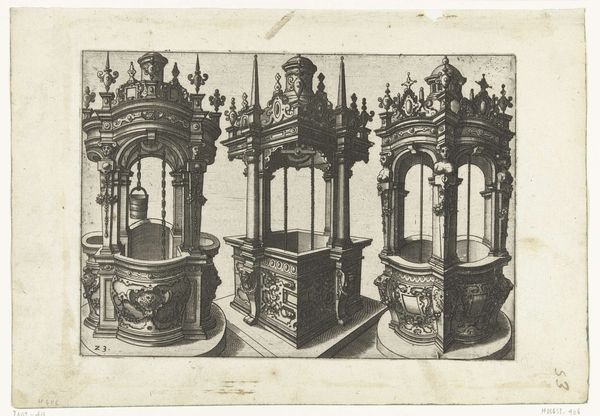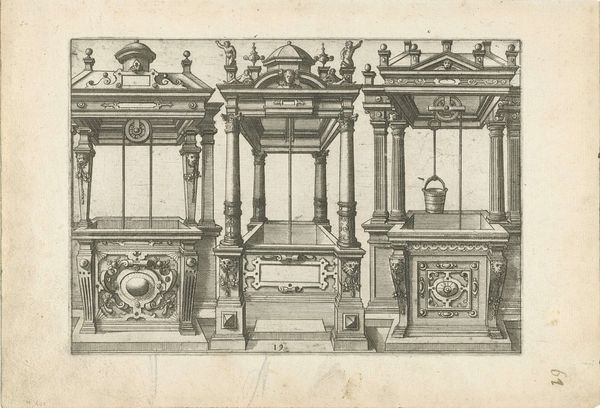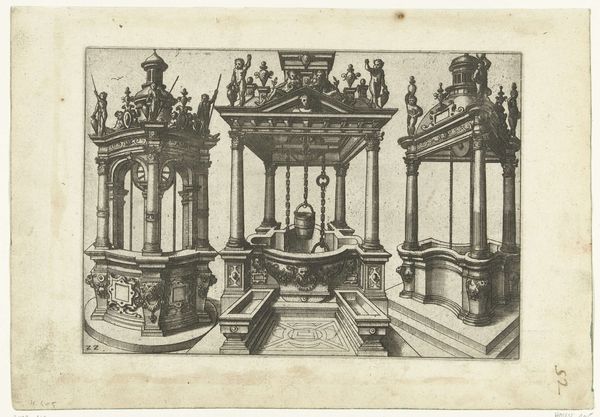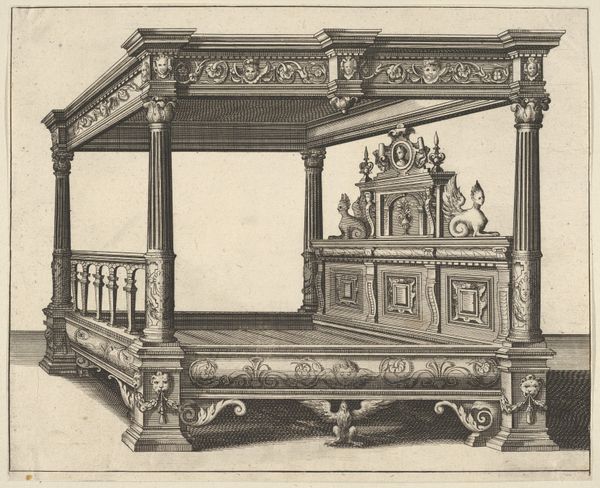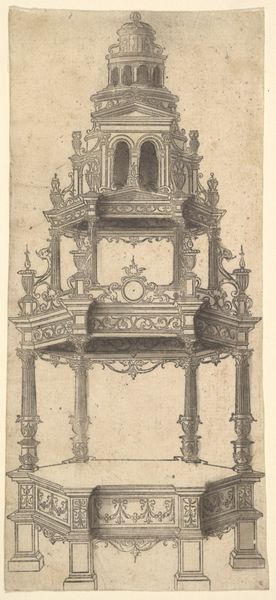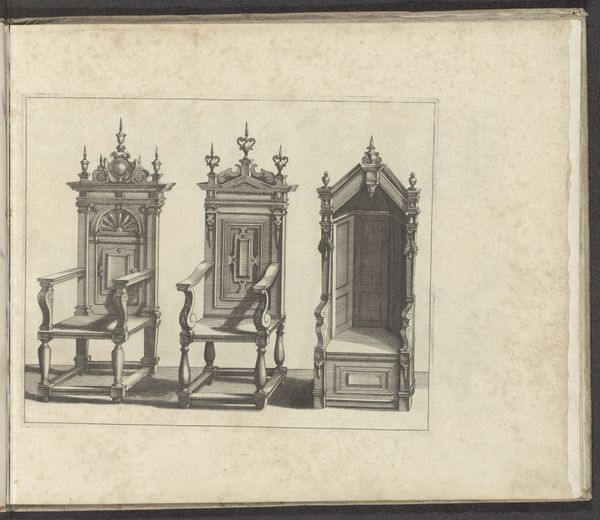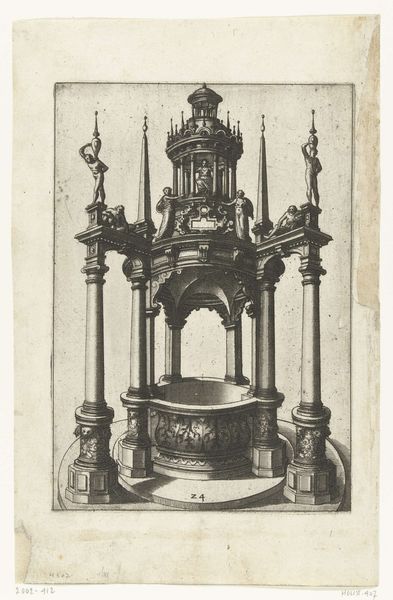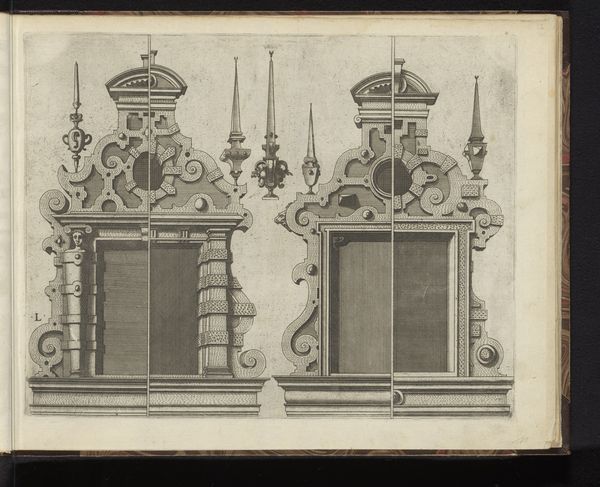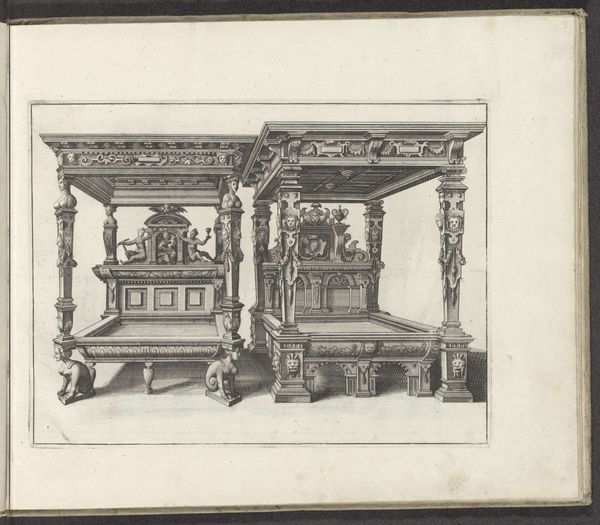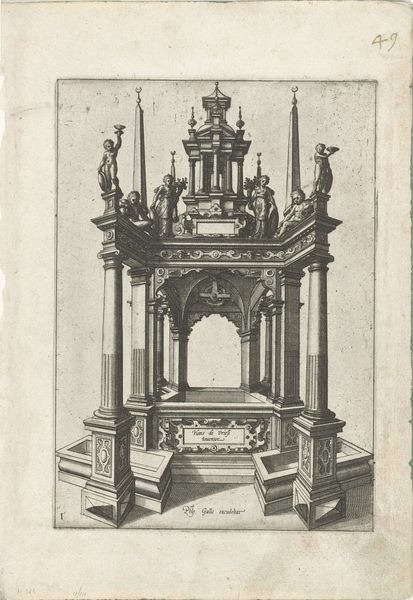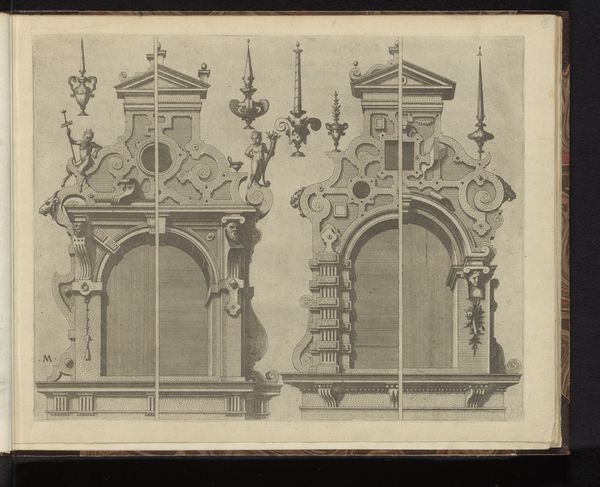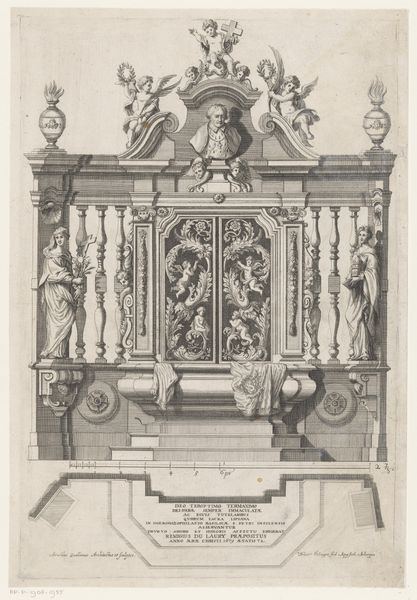
drawing, print, metal, engraving, architecture
#
drawing
# print
#
metal
#
landscape
#
form
#
11_renaissance
#
geometric
#
line
#
cityscape
#
engraving
#
architecture
Dimensions: height 143 mm, width 204 mm
Copyright: Rijks Museum: Open Domain
Curator: Here we have "Three Polygonal Wells Side by Side," an engraving from around 1574 by Johannes or Lucas van Doetechum. My first impression is the sheer density of line and detail. Editor: Yes, it’s incredibly intricate, isn't it? The precision suggests an almost architectural study. But, for me, it immediately speaks to the burgeoning civic pride of the Renaissance. Water, after all, was central to public health and prosperity. Curator: Absolutely. Consider the context of rapidly growing urban centers in the late 16th century. Reliable water sources became vital, and these elaborately decorated wells—though perhaps idealized here—would have been focal points, civic monuments really. Notice how the artists presented three distinct, yet equally impressive, designs. Editor: The lines create such rich textural details; each well appears to be fashioned from precious metals and stone. I’m drawn to the subtle variations in the polygons that form the base. Each structure has an interesting shape—like complex puzzle-boxes rising to the light. They become very playful when seen as geometric exploration. Curator: What strikes me is how the well, often associated with mundane necessity, is elevated. These engravings, readily distributed as prints, functioned almost as promotional material, disseminating new aesthetic ideals and architectural solutions for public infrastructure across urban landscapes. Editor: Yes, that linear quality reinforces that sense of calculated design. There’s very little atmosphere, but immense structural integrity—as if the very lines themselves are holding everything in perfect balance. It speaks to the formal ingenuity—these aren’t just practical objects, but exercises in geometric beauty. Curator: Indeed. The prints served both as a source of inspiration and a record of sophisticated urban design that was meant to enhance communal life. Editor: I hadn't considered the political implication before, it all feels like more than the formal exercise it appeared as at first! Thank you for shining a light on that. Curator: My pleasure, its always great to explore an artists’ wider influences.
Comments
No comments
Be the first to comment and join the conversation on the ultimate creative platform.
